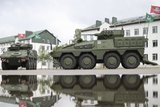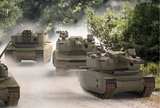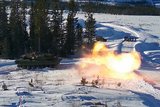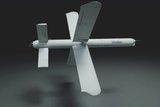IVAS programme has made major progress, says US Army Chief of Staff
The US Army has conducted over 30 test events with IVAS. (Photo: US Army)
Despite user criticism and revisions to the fielding timeline, the US Army is advancing with Integrated Visual Augmentation System (IVAS). Gen James C. McConville, Chief of Staff, claimed that the team developing the goggles has made 'major progress' with the programme.
The service has conducted over 30 test events and 100 technical sub-tests involving more than 1,000 soldiers, providing nearly 100,000 hours of user feedback. The branch and Microsoft Corporation are now working on the third version of the product, the 1.2 variant.
The IVAS system was designed to be a single platform featuring a day/night, all-weather fighting goggle
Already have an account? Log in
Want to keep reading this article?
More from Land Warfare
-
Germany signs multi-billion-dollar deals for 6x6 CAVS and GDELS Eagle vehicles
The order is a further boost for the Common Armoured Vehicles System programme which has notched notable successes in the past 12 months. The first vehicle, made in Finland, will be delivered next year with local production expected to ramp up in 2027.
-
![Rheinmetall and KNDS tank tie-up narrows trans-European options]()
Rheinmetall and KNDS tank tie-up narrows trans-European options
The French and German governments signed an agreement in June 2018 to cooperate on the development of a new main battle tank under the Main Ground Combat System programme but the effort has struggled. This new agreement may damage it further.
-
![2025 land market review: British Army woes, European heavy armour and US MBT progress]()
2025 land market review: British Army woes, European heavy armour and US MBT progress
The last year has seen several major procurements in the land market. Shephard’s Dr Peter Magill reviews the main trends and themes in land procurement of 2025.
-
![Hungary set to begin using Hero 400 loitering munitions]()
Hungary set to begin using Hero 400 loitering munitions
Developed by Israel's Uvision and with systems being sold in the thousands to multiple European NATO countries and the US, the Hero family of loitering systems is also in production in the US and Italy, the latter through Rheinmetall.
-
![Croatia orders Leopards and CAESAR howitzers as Lithuania orders more CAESARs]()
Croatia orders Leopards and CAESAR howitzers as Lithuania orders more CAESARs
The Leopard is becoming the tank of choice in central and eastern Europe as Croatia joins Lithuania, the Czech Republic and Hungary in ordering the platform. Lithuania and Croatia have also signed for CAESAR howitzers.
-
![Light Reconnaissance Strike – enabling a vital mission set (Studio)]()
Light Reconnaissance Strike – enabling a vital mission set (Studio)
A new system-of-systems concept will unlock digital integration of sensors and weapons for Light Forces, allowing them to shape the battlefield environment on their own terms and upgrade legacy platforms.


























